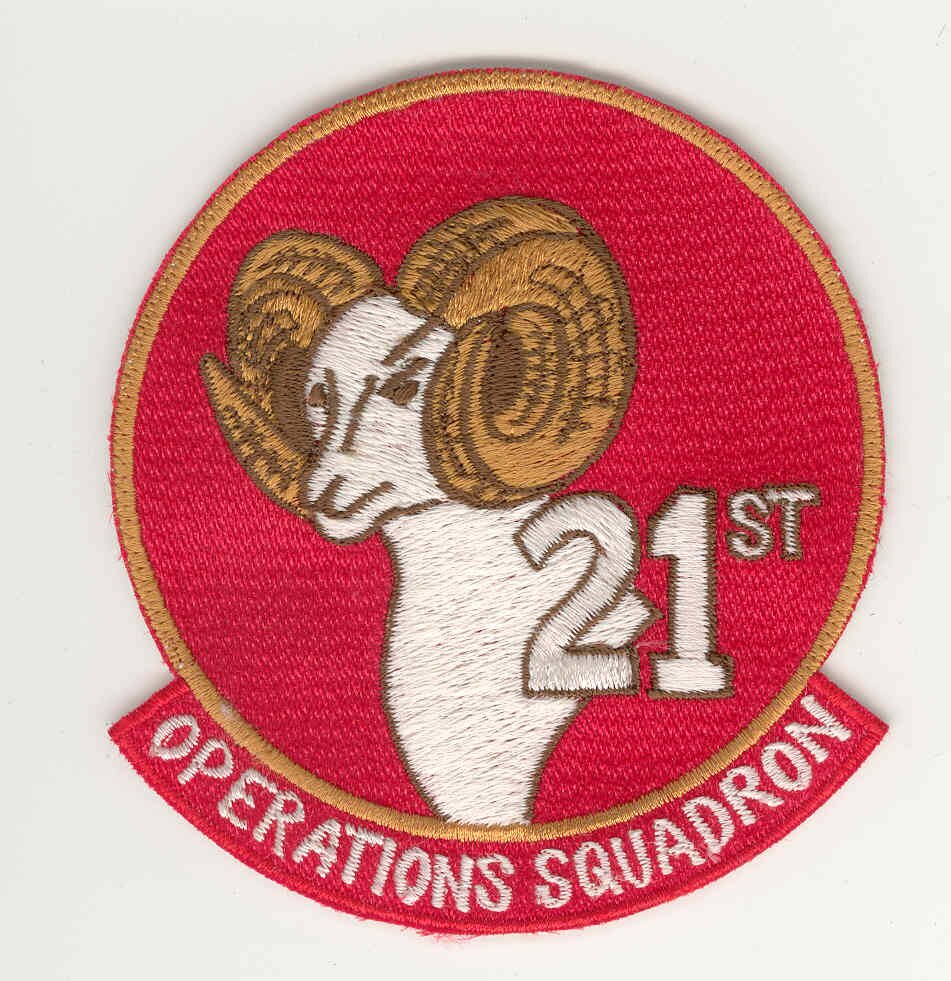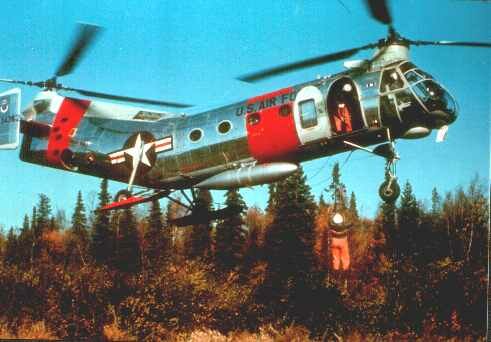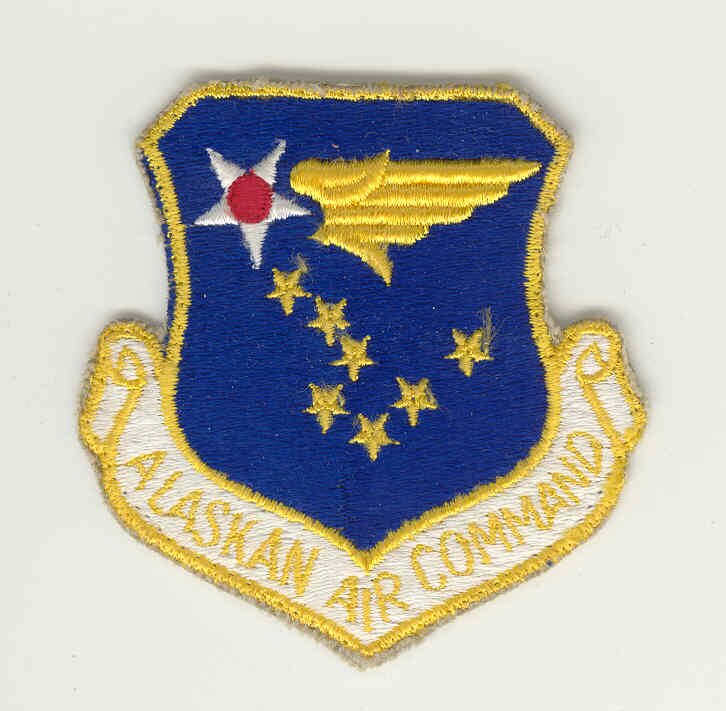


5040th HELICOPTER SQUADRON, ELMENDORF AFB, ALASKA
The 5040th Helicopter Squadron was activated at Elmendorf AFB, Alaska (AAC) in 1969. The unit began with H-21B helicopters and pilots that had been assigned to the 21st Operations Squadron, 21st Composite Wing, Alaskan Air Command, at Elmendorf AFB, Alaska.
|
|
|
|
A new patch was needed and Captain Duane "Smoke" Daily, a talented young officer, rose to the task. The design incorporated the blue sky at the top with the stars of the Big Dipper, which was part of the Alaska State flag. The round white "top of the world" showed our location in the far North with white snows of the glaciers. The yellow "swing" wings of the great flying bird represented the helicopter. In the bird's strong talons were the Lifesaving ring of rescue and the square box of supplies that we carried to the remote radar sites.
|
|
Starting in May 1970, the H-21's were replaced with 13 new Sikorsky HH-3E helicopters that were flown 3,350 miles directly from the Sikorsky factory at Stratford, Connecticut to Alaska. The H-21 pilots from Eielson AFB, Fairbanks, Alaska were re-assigned to the 5040th at Elmendorf.
|
|
The 5040th Helicopter Squadron was tasked with supporting remote Early Warning Radar Sites and performing Search and Rescue operations in interior Alaska. They were also responsible for "Rescap" for the F-4's of the 43rd Tactical Fighter Squadron stationed at Elmendorf AFB. They stood TDY Alert with the fighters at Eielson AFB, Galena AB, and King Salmon AB, Alaska. The HH-3E helicopter was an excellent aircraft for these tasks because of its speed, cargo capacity, long range in-flight refueling and water landing capabilities.
|
|
During the 1971 spring floods in interior Alaska, the 5040th H-3's flew many long hours evacuating and rescuing people from the outlying villages along the Yukon and Koyukuk Rivers in central Alaska.
On 25 July 1971, a 5040th flight crew participated in the longest over water rescue for a land-based helicopter. The 10 1/2 hour mission, requiring 3 air-to-air refuelings, took them over 450 miles out to sea to pickup a Korean merchant seaman with acute appendicitis and take him to a Kodiak Island hospital where successful surgery was performed. (Entered into the Congressional Record by
Alaska Senator Nick Begich).
|
|
One of the favorite sidelights of the 21st Ops and 5040th was "Operation Santa Claus". The pilots gathered donations and the wives assisted in sacking up candy, fruit and other goodies that were then flown to the villages on the Alaska Peninsula near Christmas time. A volunteer to be "Santa" was found among the enlisted men at King Salmon and dressed appropriately. As the helicopter flew over the village, SCHOOL WAS OUT as the eager children ran out to see Santa Claus and get their bag of goodies.
|
|
The 5040th HES was responsible for countless rescue missions in and around Cook Inlet and throughout the interior of Alaska. In the first two years of service, the Squadron flew over 10,000 hours.
|
|
|
|
In 1975, the Squadron was deactivated and aircraft and personnel were transferred to the 71st ARRS (MAC) at Elmendorf.
For more pictures:Alaska70
This page submitted by K.V Hall. Pictures by K.V. Hall, Emmett Hatch (North Slope) and Bill Waters (H-21)
Footnote*
The 71st ARRS continued operation into 1990. In August 1990, the rescue mission was transferred to the 210th ANG, Anchorage, Alaska, who received 4 new Sikorsky HH-60G "Pave Hawk" helicopters to support the mission.